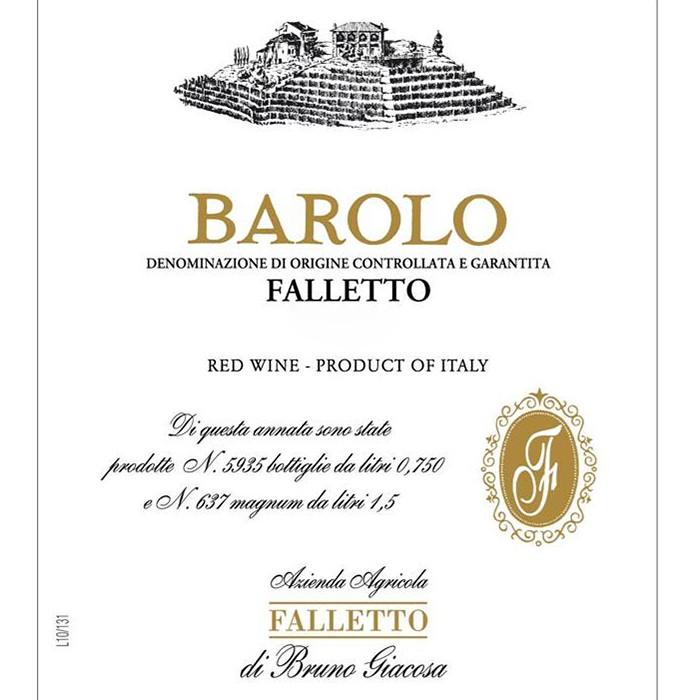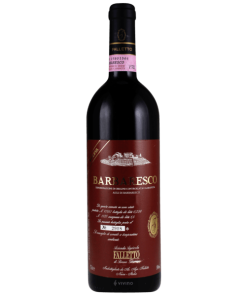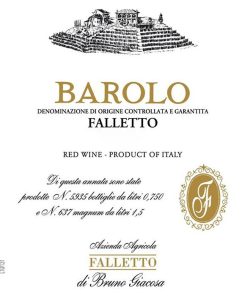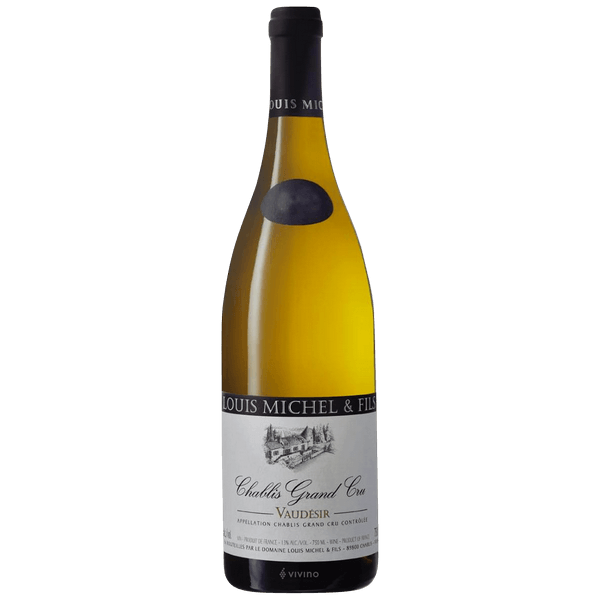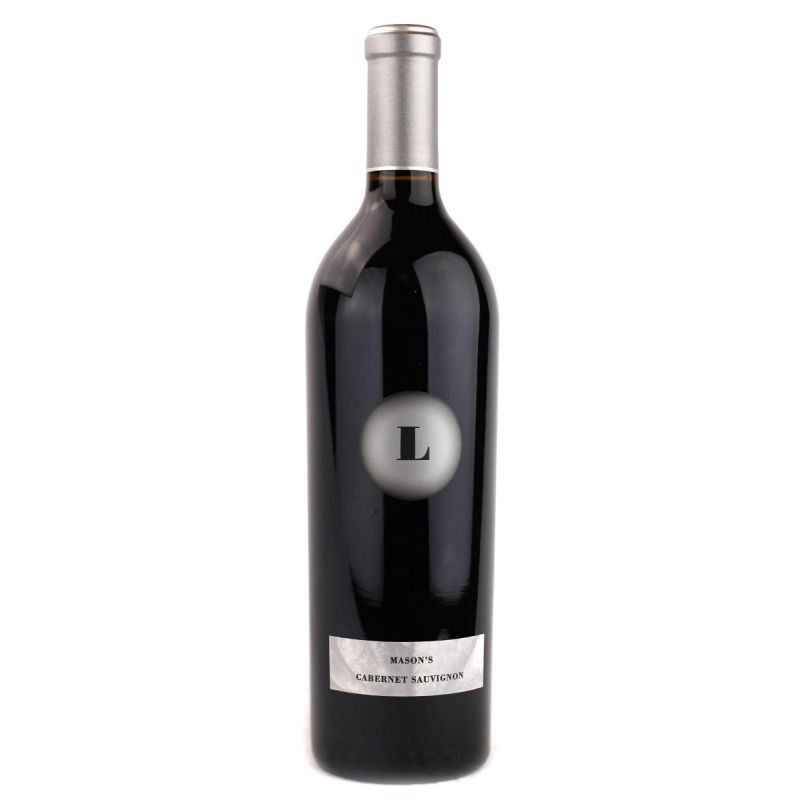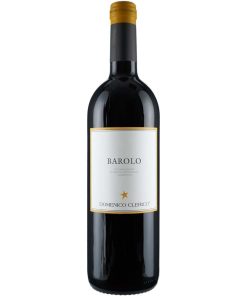-
×
 2020 Gini Soave Classico La Frosca
1 × $35.00
2020 Gini Soave Classico La Frosca
1 × $35.00
2016 Bruno Giacosa Barbaresco Riserva Asili Falletto
2016 Bruno Giacosa Barbaresco Riserva Asili Falletto is Red garnet in color. Intense and fine aromas of fresh red fruit. The palate presents good freshness, excellent structure and fine, velvety tannins.
97 James Suckling This is a really dense red with intensity and beauty, showing dried fruit, such as strawberries, as well as chocolate, tar, hazelnuts and meat. Really complex and rich. Opulent, yet tense with dusty tannins. Extremely long. Great finish. Hard not to drink now, but will age incredibly well.

Photography by Clay McLachlan/claymclachlan.com
95 Wine Spectator This pretty red offers distinctive mint, black tea, cherry, tar, iron and tobacco aromas and flavors. Firm and dry, with the tobacco and tea notes echoing on the finish. Shows plenty of finesse. Best from 2024 through 2045.
94 Decanter A massive wine from Serralunga, this displays dense cherry and red-fruit aromas that are solid and brooding. Full-bodied with firm tannins that are chunky now, this has immense concentration and force, if not the ethereal quality that marks Giacosa’s supreme wines. But it’s balanced, with the high alcohol not discernible, and given the slight furriness on the very long finish, this needs time.
For many, the red label riserva Barolos and Barbarescos made by Giacosa are the equal of any red wine made in the world. He made them only a few times a decade, and they are not only fantastically complex, rich, powerful wines capable of decades of development; they are also endowed with that rare and magical sense of extra dimension found only in the greatest wines.
 So high were Bruno Giacosa’s standards that, over the decades, he deemed relatively few wines worthy of wearing the red label. As a consequence, his more typical white label releases often offer such soaring quality that we find ourselves asking why they weren’t given red labels. In such cases, the difference in quality may have been known only to Giacosa himself.
So high were Bruno Giacosa’s standards that, over the decades, he deemed relatively few wines worthy of wearing the red label. As a consequence, his more typical white label releases often offer such soaring quality that we find ourselves asking why they weren’t given red labels. In such cases, the difference in quality may have been known only to Giacosa himself.
Giacosa is nearly as famous for his modesty as for the surreal character of his wines. As his legend grew, many writers made the pilgrimage to the Giacosa cantina in Neive eager to learn the details behind his wines. But they usually only received the simple response that he was a traditionalist. Giacosa always preferred to let his wines do the talking. “Winemaking involves a great many small decisions, each affecting the next. One can only hope to get them right, to capture what there was in the grapes to begin with” is what he told Gerald Asher in the early ’90s; this was about as far as he would go at the time in articulating his methods.
Giacosa was somewhat more detailed in describing his approach in later years, yet what he revealed is not substantially different from what other producers do. The key elements in his work were a two- to three-week fermentation in stainless steel at moderate temperatures followed by three to four years aging in French oak botti. Surely, as with an Henri Jayer or Gerard Chave, the answer to what makes a Bruno Giacosa wine so extraordinary was contained within the man himself.
Born in Neive in 1929, Bruno spent virtually his entire life in wine, beginning to work in the cellar with his father Mario and grandfather Carlo at the age of thirteen and becoming fully employed in the family business two years later. Bruno therefore learned how to make great Barolo and Barbaresco—and fine Barbera and Dolcetto as well—from his father and grandfather, rather than in enology school. He learned important lessons from them, not the least of which was how to select fruit. This particular talent was always of paramount importance to him, but never more so than in the early days, as he didn’t buy his first vineyard until 1982.
Historically, the most famous Giacosa cru bottling has been his extraordinary Barbaresco “Santo Stefano di Neive,” made between 1964 and 2011 from grapes purchased from the vineyard’s sole owner, the Castello di Neive. The commune of Neive’s soils have a high proportion of clay and produce powerful and structured Barbaresco. The Santo Stefanos made by Giacosa—whether a white label normale or a riserva from a great year—remain the quintessential Neive Barbarescos.
From the late 1960s until the early 1990s, Giacosa made several other excellent cruBarbarescos from purchased fruit: Montefico, Rio Sordo, Albesani, San Cristoforo and Asili. But only one of these bottlings, Asili, was made multiple times, beginning in 1967, when Giacosa began bottling single-vineyard crus.
With the rise, however, of estate-bottling in the 1990s—and thus facing the loss of his traditional grape sources—Giacosa decided to purchase his own vineyards in Barbaresco, choosing what are arguably the two finest crus of all, Asili and Rabajà. As would be expected, the Giacosa wines from these sites have been profound, whether red or white label, and have added immeasurably to the Giacosa legend.
As in Barbaresco, Giacosa bottled a stunning series of Barolos from purchased fruit in the 1960s and 1970s, including wines from Rocche di Castiglione Falletto, Villero, Ginestra, Pugnane, Bussia and Collina Rionda. But then in 1982 he acquired the majestic Falletto di Serralunga d’Alba vineyard, and it became the source of his greatest Barolos—rivaled only by the heroic Collina Rionda red and white label Barolos he made between 1967 and 1993. The wines were divided into two bottlings: “Falletto” (always white label) and “Rocche del Falletto,” from four south-facing parcels on the vineyard’s upper slope. His Rocche del Falletto bottlings could be either red or white label.
Bruno Giacosa’s 2018 death robbed the world of one of its greatest winemakers. However, his daughter Bruna, working with his longtime enologist and protegé, Dante Scaglione, has continued her father’s important work. Her commitment assures us that the Giacosa name on a bottle of Barolo or Barbaresco denotes both highest quality and true vineyard expression.

